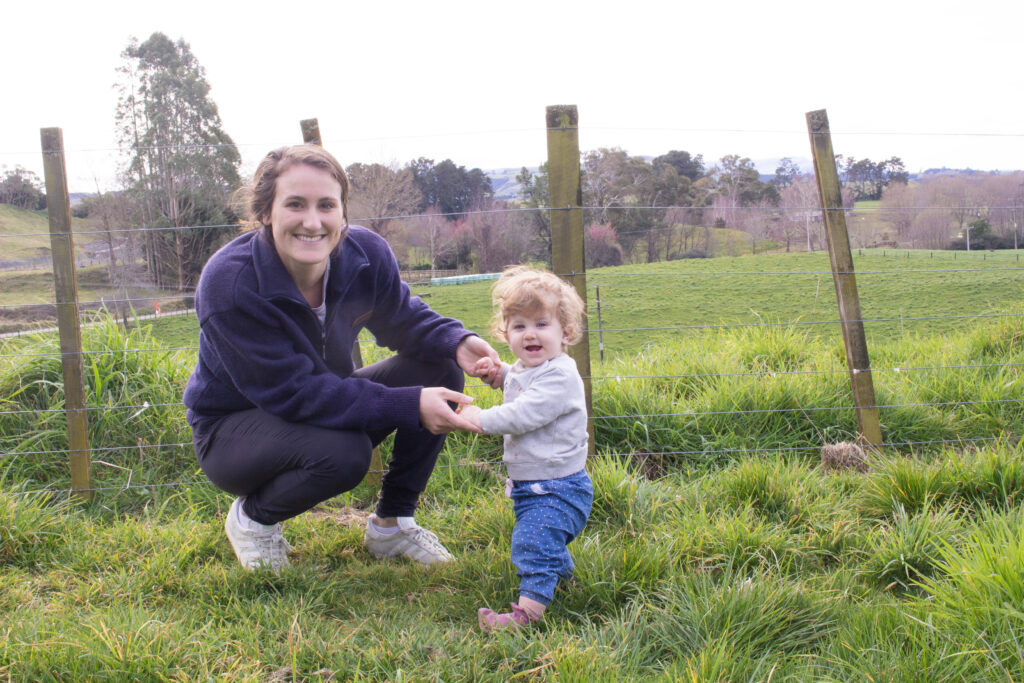LISTEN: Six months on from Cyclone Gabrielle, the grass is finally beginning to grow and east coast farmers are enjoying a bit of sun. Bryan took a drive through Hawke’s Bay and sat down with three farmers who told him what it’s like to be in the climate’s crosshairs and how they’re faring now.
One day at a time. That’s how Pātoka beef farmer Steve Horgan is tackling the job of rebuilding the cyclone-hit farm he’s called home his entire life.
Cyclone Gabrielle was a destructive force like nothing Horgan had seen.
“I’ve lived here all my life. I’ve never seen anything like it,” he said.
“But then, you go and look out that window now and you look at the landscape you think how was that formed? These things have happened before and they’ll happen again.”
More than 30% of Horgan’s farm has been retired into either pines or natives, which he credits with limiting the damage.
Following the cyclone Horgan’s family and friends turned up to help out and the wider community was on hand to make sure the business of farming could continue, despite the lack of roading.
“We still had about 100 cattle to send away, but through a bit of Kiwi ingenuity our neighbours, Patrick and Izzy Crawshaw, got a hold of a crate and a trailer so we could ford two rivers and get them into town like that. It was a bit of a roundabout way, but it worked.”
Izzy Crawshaw, whose farm neighbours Horgan’s, was at the heart of the community response.
“The first few weeks were a bit like a war zone,” she said.
“We had just under eight weeks of isolation and not being able to get into town, and a few weeks of no power. A heavy reliance on helicopters and community support.”
Community hubs were established to hold resources like food, water and medication.
“It was incredible how the community came together, we’re really lucky with the community we have out here.
“Since the bridge opened up it’s just getting back into business now and trying to make a plan – looking ahead from both the community and on farm as to what recovery looks like.”

Much of the work addresses the very visible scars on the landscape, but Crawshaw said it’s equally important to heal the mental scars as well.
They set up regular events to keep everyone connected.
“Resilience workshops with Rural Support Trust, a women’s night. We’re just trying to make sure there’s a bit of an events calendar and trying to keep everyone connected in a positive fashion – it’s not just about funding workshops.
“Everyone recognises we need to keep everyone connected so everyone’s doing their bit.”
What would really help, though, is sunshine.
“There’s just still so much rain. There’s so much water in the soil already so a little bit or rain makes such a massive difference. From that mental wellbeing perspective it’s just trying to get everyone through winter, keeping that connection with the community.”
Horgan said the key to dealing with the enormity of the challenge is realise the rebuild is a marathon, not a sprint.
“It’s going to take six years. And you’ve just got to accept it, you know?
“We’ve got a big book and we’ve written down where all the slips are. And you know, there’s 30, 40, 50 and it keeps going up every day because you keep finding sections of things that need repairing – lots of lots of trees. A lot. We’re just gradually replanting them and it’s just going to take time.”
It’s a matter of taking it one day at a time, he said.
“You just sort of find ways. You pick what you can do in a week and what you can’t you patch up.
“Starting tomorrow, we’re putting our water system back. We’ve had a spring that’s been tapped for about 80 years and it dried up. But at least it’s popped out in another place further downstream so we can tap it there. So that’s our mission this week.
“You focus on the things that are important. You look after yourself. And yeah, you look after the animals and feed them well because they pay the bills, and we’ve been able to do that.”
“Just empower the community, they’ll do a much better job, especially when it’s remote.
“I mean, we expected our roads wouldn’t get opened so we went and opened them ourselves because you know they’ll be too busy down on the flats for that stuff.
Horgan – who said the water that came through in the dawn hours of February 14 “looked like a tsunami” – reckons there’s a lesson for everyone in the wake of the cyclone.
“Give us the help when we need it and let us get on with it.”






